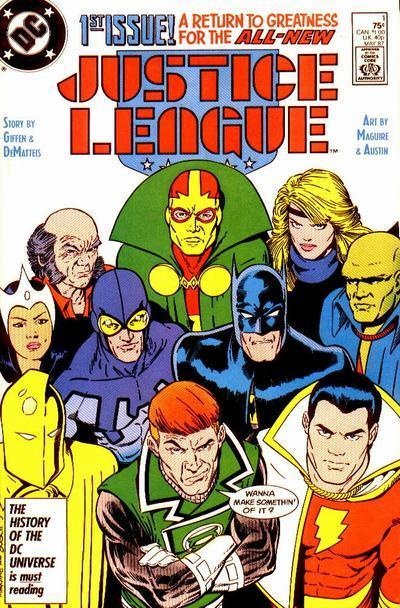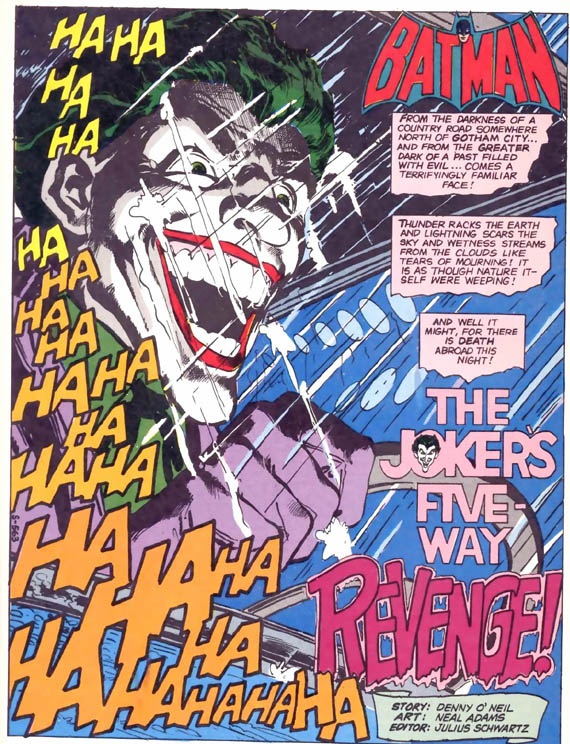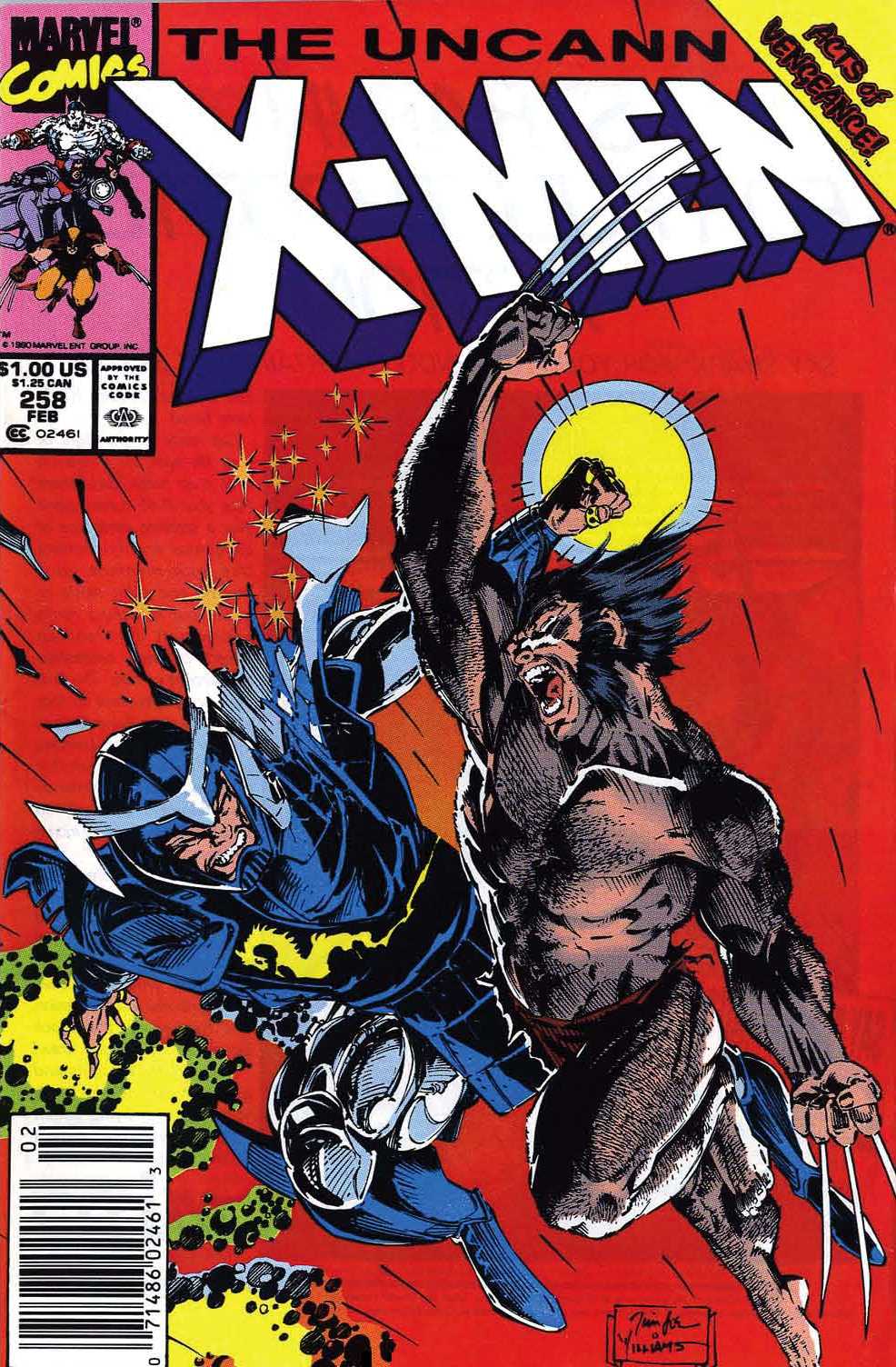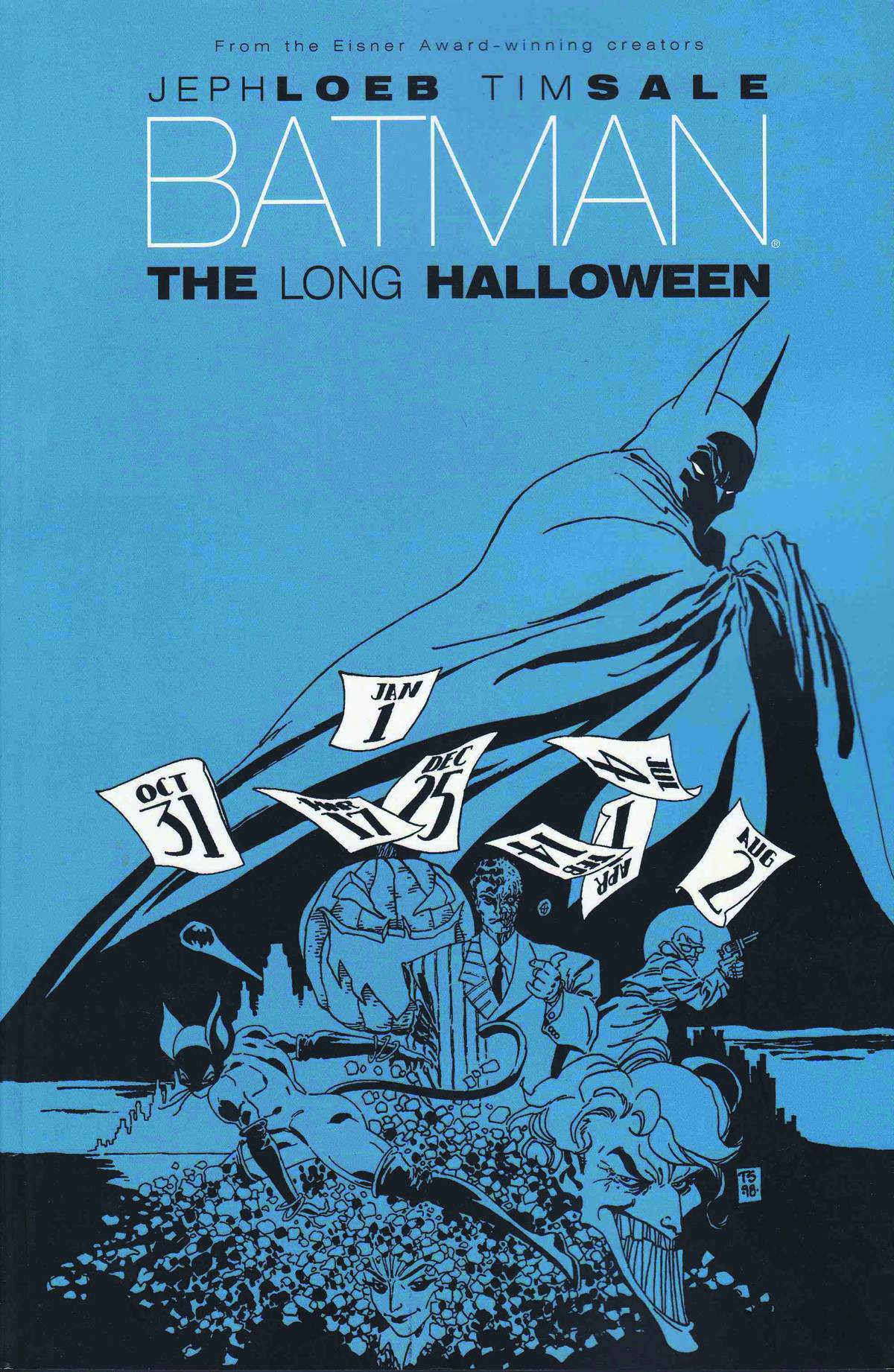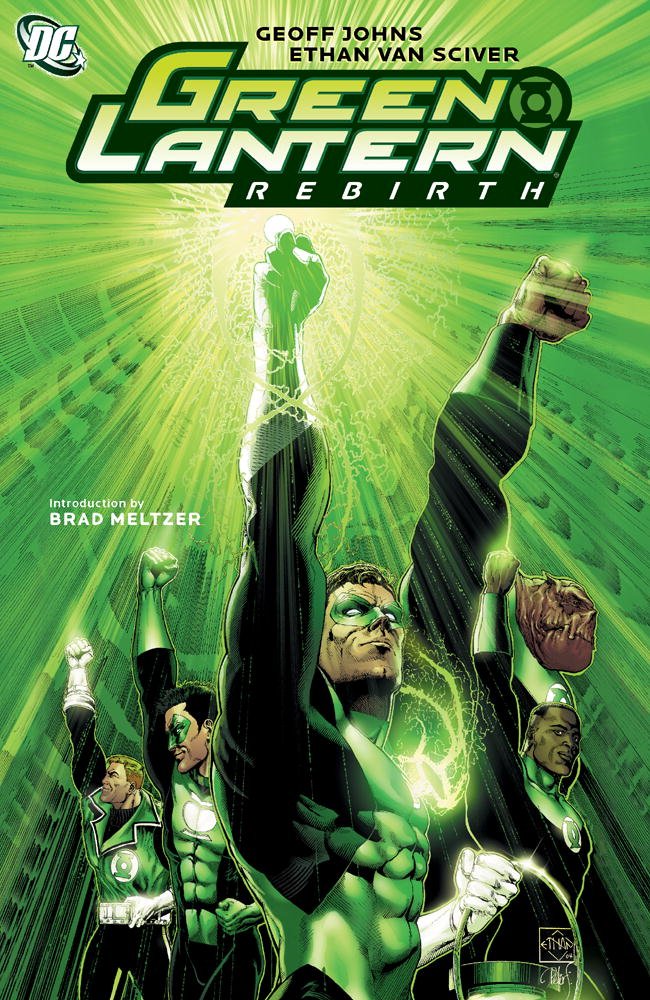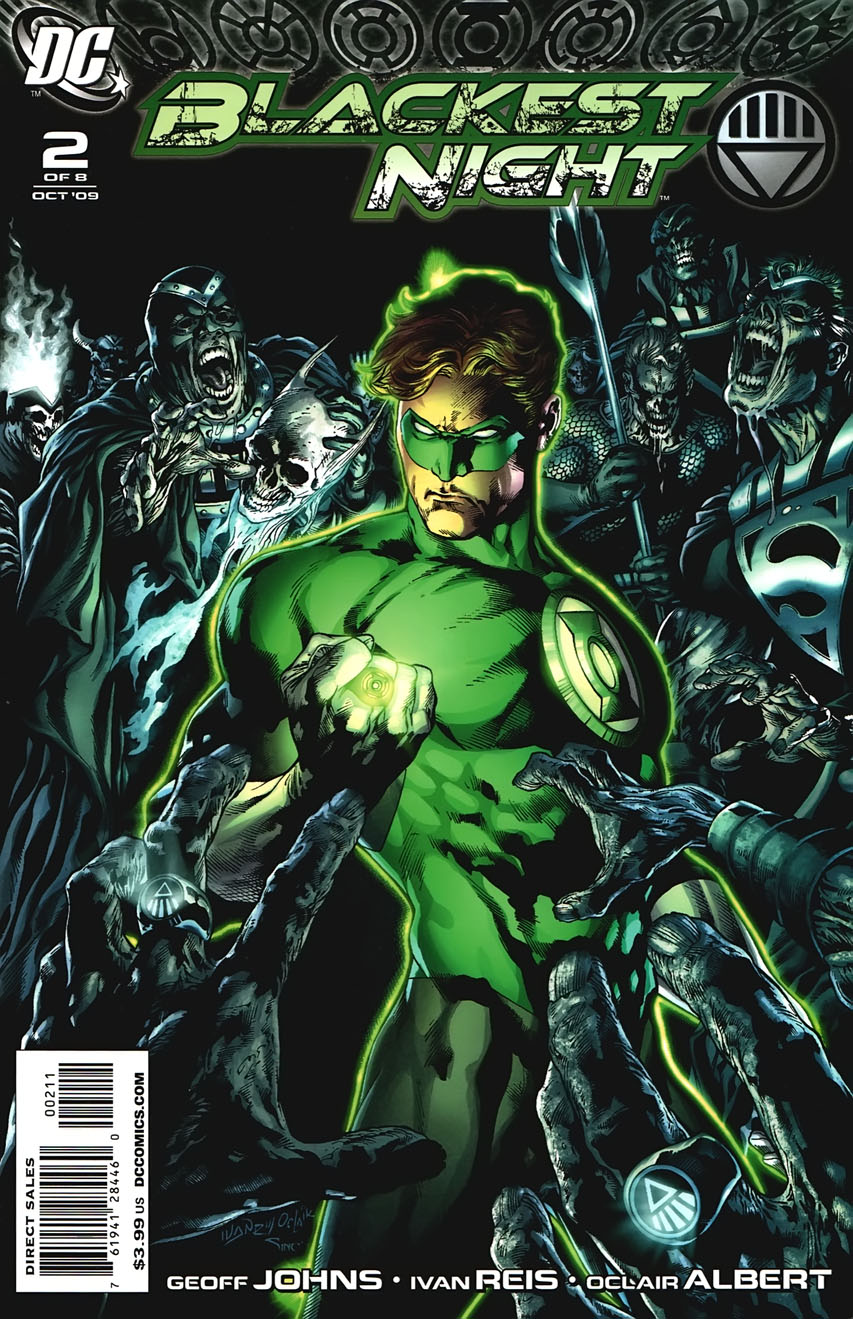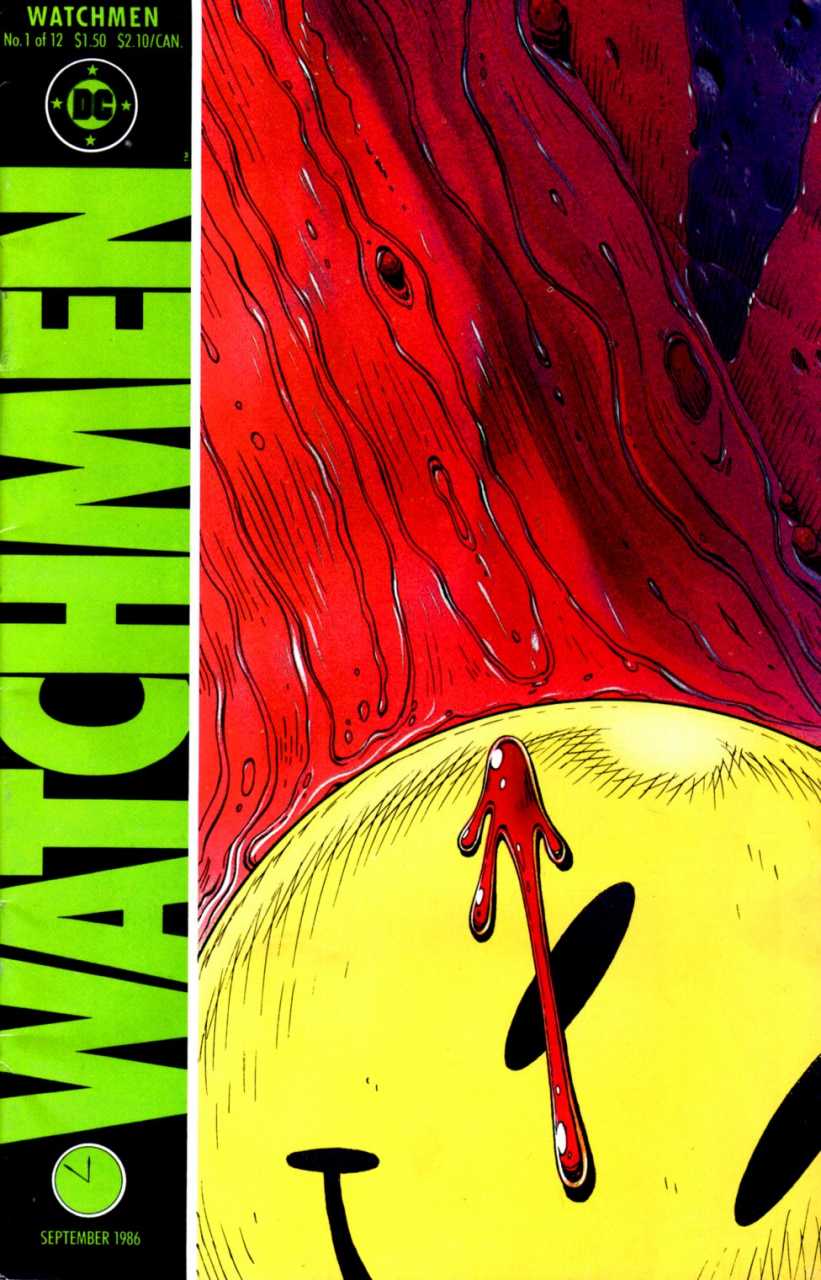Mild-mannered reporters by day, Greg Phillips and Nick Duke share an intense love of comic books that has made them the Hard-Traveling Fanboys. And if there’s anything that fanboys love, it’s debating what book is better than another book or which character is “cooler.” Enter Countdown, a monthly column where Greg and Nick will give a top five list and debate the merits therein.
Greg: Fall is in the air, dear readers (assuming there is more than one of you), and change is the word of the day in the comics industry. New titles are being launched, old titles are being cancelled, and creative teams are shuffling around like the ’85 Bears.
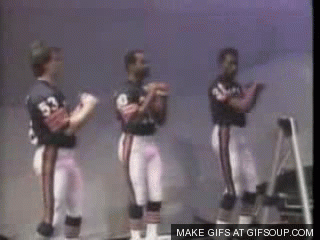 Some of these pairings of writer and artist will undoubtedly fail. Others will succeed. And perhaps, with a little luck, one or two of them may join the pantheon of the all-time greats. And it’s those all-time greats we’re here to type about this week.
Some of these pairings of writer and artist will undoubtedly fail. Others will succeed. And perhaps, with a little luck, one or two of them may join the pantheon of the all-time greats. And it’s those all-time greats we’re here to type about this week.
From Stan Lee and Jack Kirby to Ed Brubaker and Sean Phillips, it’s always been the creative teams that make comics work. Characters and concepts are great, but without the writer’s words and the artist’s visual storytelling, comics would not be the incredibly unique artform that it is. In today’s marketplace, the creators are arguably bigger draws than the brands.
In any event, we’re here to list our all-time favorites — the writer-artist pairings that have left the biggest marks on our reading lives.
Nick: Yes, we’ve often discussed our love for certain authors and waxed poetic on the talents of certain artists, but the two really go hand in hand. The author and artist have a symbiotic relationship that can define a great work in the GENRE.

Great art can elevate a mediocre story and great writing can help you tough through subpar art, but it’s impossible to achieve true greatness without having both elements at their best.
So, in that light, we’re here to count down our favorite pairings of writers and artists. Greg, lead us off.
Greg’s No. 5: Keith Giffen, J.M. DeMatteis and Kevin Maguire
Nick: One of many teams I considered for my own list, they narrowly missed the cut. While I enjoy a good comedy yarn every now and then, the comedic comic book is something that Greg finds, in a word, glorious.
Greg: When I hear the term “Justice League,” the first two things that pop in my mind are, in order, the Bruce Timm animated series and the 1980s-’90s Justice League International/America of this fantastic creative team. The writing duo of Giffen and DeMatteis had the privilege of relaunching the Justice League after the epic Crisis on Infinite Earths event that reshaped the greater DC landscape.
Thus, after the “Legends” crossover, we got the 1987 relaunch of the League, and a bold one it was. Eschewing tradition and the popularity of serious, action-oriented Marvel books at the time, Giffen had the idea to go in the complete opposite direction. Instead, he and DeMatteis made Justice League the zaniest, most irreverent, hilarious book in mainstream comics. To draw it, they nabbed the brilliant Kevin Maguire, whose own tastes melded perfectly with the writers’ vision for the characters.
The “Bwa-ha-ha” era, as it’s come to be known by fans, earned its reputation by packing each issue with more laughs than virtually any superhero book that followed. There were so many classic moments in their multiple years on JLA, JLI and company — Booster Gold and Blue Beetle’s get-rich-quick schemes and lechery, the unique Barda-Miracle relationship, Captain Marvel’s man-child persona, Ice’s naivety, Guy Gardner’s mastery of the art of being a complete tool, and Batman and Martian Manhunter’s increasing frustration in dealing with their inept colleagues. And, of course, there’s the One Punch scene, one of the greatest in the history of comics.
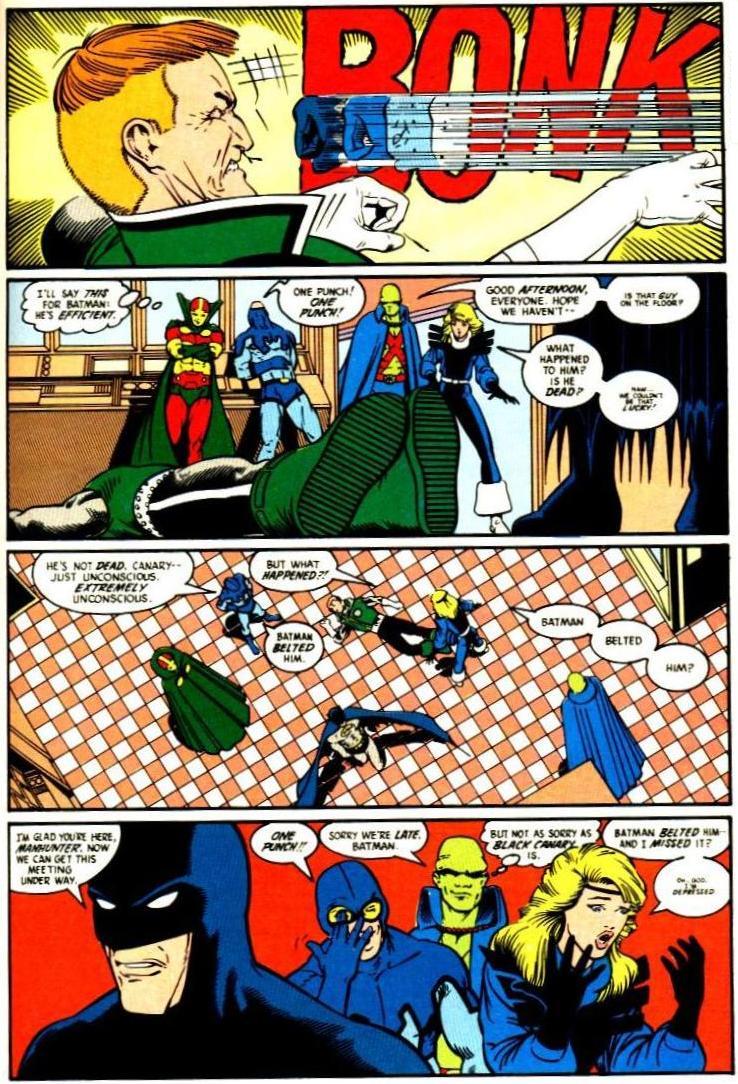
In the years since their run ended, the three maestros have revisited these characters time and again, each time reminding us, if only briefly, that comics can be genuinely hilarious. Maguire’s flare for facial expressions and ability to infuse a Looney Tunes-style energy throughout the years is essential to creating the jokes and also capturing the moments of genuine emotion that pop up when you least expect them.
Nick: Their style certainly may not be for everyone, but I for one enjoy it in doses. I wouldn’t want all of comics to take this approach, but variety is always a good thing, and it’s good to have a little levity from time to time.
Greg already mentioned it, but the one thing that instantly comes to mind when I think of this creative team is the iconic “One Punch” scene. It involves two of my favorite characters, and couldn’t be a better representation of what those two characters were all about at the time.
Greg: All three men have shown themselves capable of creating legendary comics in a variety of different styles, but their unique comedic approach keeps me coming back for more. Variety is the spice of both life and comics, and today’s market could use a lot more risk-taking visionaries like Giffen, DeMatteis and Maguire.
Nick’s No. 5: Denny O’Neil and Neal Adams
Greg: Undoubtedly one of the most important teams in comic history, O’Neil and Adams were largely responsible for revamping Batman, Green Arrow and even Green Lantern, making them contemporary and interesting characters in the early ’70s and setting the stage for the incarnations we have today.
Nick: These two legendary creators have a laundry list of accomplishments in the comics industry, but it’s their work together on a couple of green-clad characters that I’m most fond of.
When Green Lantern’s solo title was struggling to stay afloat in the ’70s, DC turned to the team of O’Neil and Adams, who brought Green Arrow into the book and changed the book’s tone to reflect a more socially conscious approach to storytelling. Green Arrow played the hero of the left wing, while Green Lantern was cast as the pro-establishment right winger. In hindsight, these stories seem to be very thinly veiled social commentaries, but at the time, they were truly groundbreaking. They represented that comics, long overlooked as a children’s medium, could tell serious stories about serious topics.

The approach has had influence on numerous characters and creators in the decades since, and is largely responsible for changing the way comics are viewed.
Of course, perhaps the most memorable moment of that run didn’t even come inside the book. Instead, the cover to Green Lantern/Green Arrow #85 is one of the most iconic images in all of comics history. On it, we see Oliver Queen’s sidekick Roy Harper preparing to inject himself with heroin. Green Lantern has revealed this to Green Arrow, leading to the iconic “My ward is a JUNKIE!” exclamation from GA. Which GL, of course, follows with, “How ’bout it?”

Greg: And who could blame GL, after suffering through months of Oliver’s barbs and high-horse criticisms?
But in all seriousness, it’s an incredible run. Adams’ art was so realistic and evocative that it lent weight to the dialogue and O’Neil’s scripts. Writer and artist worked hand-in-hand to put out consistently brilliant work.
But their work on Batman may be even more important. It’s hard to believe, but the most popular comic book character in the world right now was on the verge of being labeled lame and irrelevant in the late 1960s. O’Neil and Adams came in and almost instantly revamped the character by removing many of the campy elements introduced in the Adam West TV show and restoring the detective persona that made Batman popular in his earliest years. They also developed a litany of fantastic characters, perhaps the most well-known of whom is the archvillain Ra’s al Ghul. Their story “The Joker’s Five-Way Revenge” is responsible for moving the Joker back into his original role as a homicidal maniac. Frank Miller is often given credit for rejuvenating the Batman mythos, but without O’Neil and Adams’ 1970s run, Miller’s work never would have been possible.
Nick: Indeed.
Greg’s No. 4: Chris Claremont and Jim Lee
Nick: Hard to argue with this selection, as this team was responsible for one of the most financially successful comic book runs of all time.
Greg: Many diehard X-Men fans (including some of my colleagues at Place to Be!) will likely bristle at my inclusion of Claremont-Lee instead of Claremont-Byrne or even Claremont-Cockrum. But what readers must understand is that, as a 30-year-old, the X-Men team of my earliest youth was Claremont and Lee. And Lee, partially due to that fact, is my all-time favorite ongoing penciller.
Chris was already many years into his iconic, universe-defining Uncanny X-Men run when Jim Lee came aboard and began contributing issues. Claremont’s incredibly detailed writing had helped define most of the main cast, but it wasn’t long before Lee began to make his mark on the brand by redesigning some characters and (along with Claremont) introducing fan favorites like the mysterious Cajun thief known as Gambit.
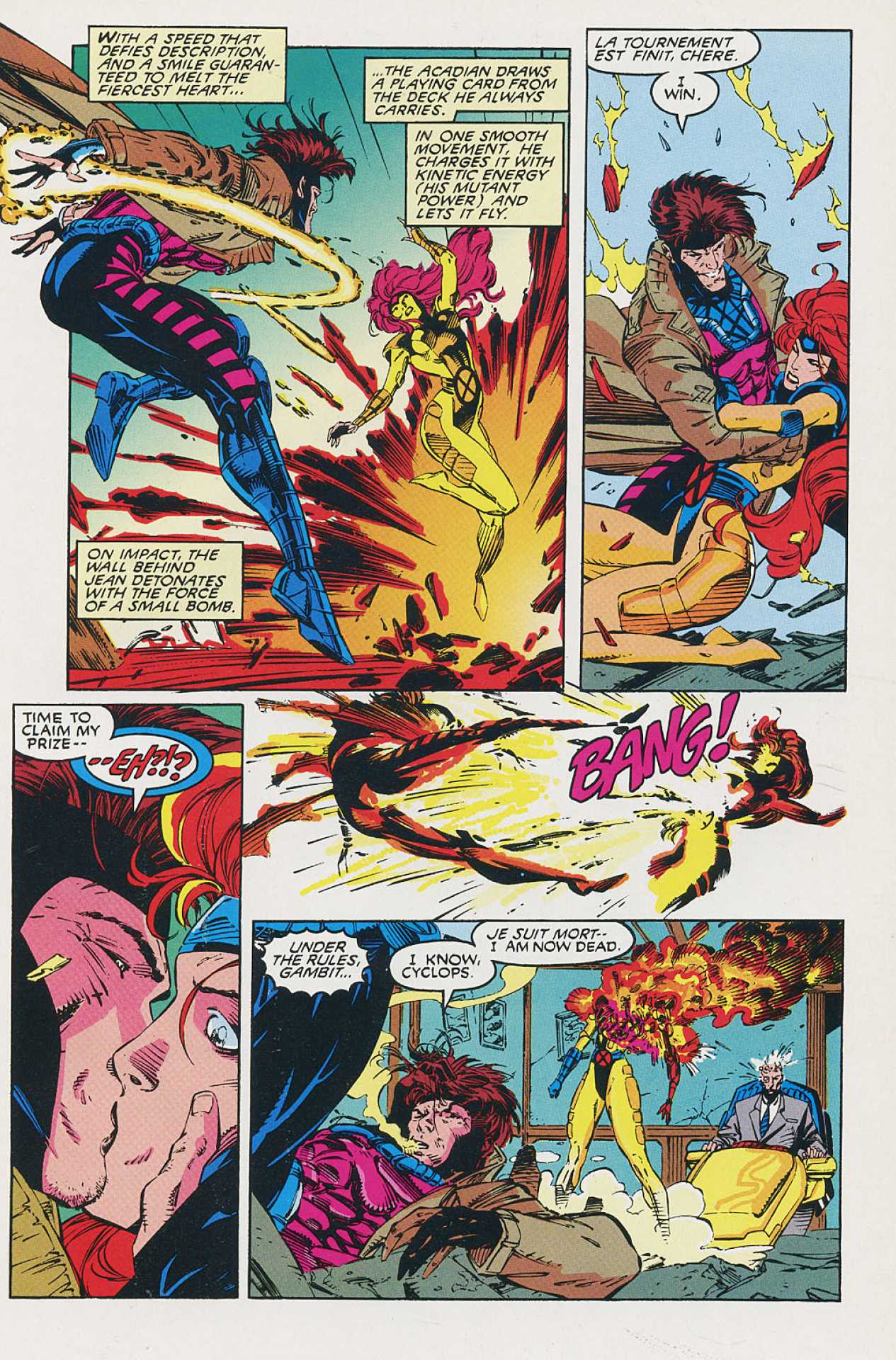
To be frank, what drew me to X-Men comics as a kid was just how friggin’ cool Lee’s art was. He made the characters look like badasses, whether they were male or female. His redesigns in the early ’90s came to define the looks of the characters for virtually my entire generation, while Claremont’s narration and dialogue provided the character blueprints by which I still judge X-Men stories. Whether it was Gambit’s bayou accent complemented by his cocky stances or Rogue’s southern belle-isms contrasted by fiercely strong action poses, the team managed to make comics that truly drew kids to the stands. Every week at school, we’d impersonate our favorite X-Men characters and try to mimic Lee’s drawings (usually very poorly). Nostalgia definitely influences this pick, but it’s a run that still means a lot to me — so much so that I recently bought the first Marvel Omnibus collecting their run.
Nick: As someone who isn’t well-versed in the X-corner of the Marvel Universe, the Lee selection makes sense. His depictions of the X-Men wound up being the ones that stuck with me the most, largely because they served as basis for the ’90s animated series.
Greg: A series we’ve written about before!
Nick’s No. 4: Jason Aaron and Esad Ribic
Nick: Yeah, yeah, I know….They’ve done fewer than 25 issues together, their run just ended so there’s no historical perspective on it, etc. To all that, I say, “Verily, who cares?”
Greg: And lo, Comic Book Guy vomits.

But despite their recency, there’s no denying the quality of Aaron and Ribic’s collaboration on Thor: God of Thunder, one of the greatest takes on Marvel’s God of Thunder (or, in my opinion, any superhero).
Nick: This is comic blasphemy for many, but at this point, it’s the truth: I’ll take the 25 issues of Thor: God of Thunder over any 25 issues in the history of Thor, including the universally beloved Walt Simonson run. Simonson was great and modern Thor owes a lot to those times, but in my opinion, Jason Aaron has crafted and will continue to craft a Thor epic that will stand among the best runs on any character by any creator once all is said and done.
Sadly, his time with Ribic is at an end, but it’s hard to see anyone topping Esad as Aaron continues his tales of the Odinson. Ribic’s art brought the feel of a medieval painting to life, something like a light version of Alex Ross. I say light only because Ribic was able to meet a monthly deadline without years of preparation. And Aaron clearly has an understanding of Thor, his mythos and his supporting cast that no writer since Simonson has been able to show.
Whether it’s original creations in Gorr the God Butcher or preexisting ones such as Malekith the Accursed and Galactus, Aaron and Ribic just nail every interaction in the book. It’s absurd at times just how good it is.
When female Thor was announced, I was pretty crushed. Not because a woman would wield the hammer, but because it meant the end of a pairing Asgard hasn’t seen the likes of in decades and likely won’t be able to top for many more.

Greg: It’s appropriate that Ribic, with his European origins, would draw the Mighty Thor. That his style meshed so well with the writing of (like myself) an Alabamian in Jason Aaron is something of a surprise. Yet Aaron wrote to Ribic’s strengths, while Ribic drew to Aaron’s. Aaron knows how to cut to the heart of the Asgardian mythology and make the concept relatable for outsiders and awe-inspiring for longtime fans. And no comic artist has ever exemplified Norse mythology as much as Ribic. If I had my way, these two would continue creating Thor and Asgard-related books until the end of time.
Nick: But, all good things must come to an end. Although, who knows? There may come a day once again when Thor Odinson wields the mighty hammer Mjolnir and Esad Ribic wields the mighty … number 2 pencil?

Greg’s No. 3: Jeph Loeb and Tim Sale
Nick: An eggs-cellent choice. I’ll have more on this pairing in a bit.
Greg: It’s hard to think of a single creative team in the modern era that’s had so much success with so many iconic characters. This team has managed to work on icons like Batman, Superman, Spider-Man and the Hulk, and it’s succeeded with each one to varying degrees. The team’s trademark is a retro approach to the character and his supporting cast — exploring the earliest days of Peter Parker and Gwen Stacy in “Spider-Man: Blue,” or Bruce Banner’s initial struggles with the Hulk persona in “Hulk: Grey.”
They also crafted one of the great modern Superman stories, “For All Seasons.” It’s one of the comics I’d most recommend to anyone who doesn’t “get” Superman or his appeal.
Yet the team unquestionably enjoyed its greatest success working on the Dark Knight. Exploring the months and years following Frank Miller’s “Year One,” Loeb and Sale crafted a story so great that, while initially considered out-of-continuity, it was used as the groundwork for multiple later stories and has influenced aspects of the New 52 as well. “The Long Halloween,” which was a major influence on Christopher Nolan when he sought to reboot Batman on the big screen, stands as one of the greatest works in the genre.

They followed it with “Dark Victory,” another modern classic. And their solo stories collected in “The Haunted Knight” are essential reading for any Batfan.
From the bold reimagining of characters like Barbara Gordon and Calendar Man to the terrific development of the Holiday and Hangman killers, Loeb and Sale continued the noir style established by Miller and added layers that made early Gotham seem more interesting than the contemporary Gotham of the time. Especially important was their ability to convey mystery. Batman is the world’s greatest detective, after all, and Sale conveyed a sense of dread and uncertainty in every panel.
It’s a truly symbiotic partnership, and while both have enjoyed success apart, they’ve rarely approached the highs experienced together. Then again, few creators have.
Nick: Well said, sir.
Nick’s No. 3: Geoff Johns and Ethan Van Sciver
Nick: We’ve talked countless times about the Geoff Johns run on Green Lantern and how much it influenced and touched us along the way. One of the truly unique things about it is that Johns crafted a fantastic run with a handful of artists along the way, to the point that you can’t really credit any one artist more than another for the success of the run. Yet, there was no way Johns and GL wouldn’t be represented on my list, so when it came to choosing an artist, I decided to go back to my Green Lantern roots.
I was introduced to Green Lantern through the fantastic Sinestro Corps Special one-shot that kicked off “Sinestro Corps War.” The book, of course, was drawn by Ethan Van Sciver. And for someone who had never read such a cosmically driven book, his art instantly blew me away. Bright colors intermingled with fascinating creature and character designs, making for a true sensory experience. Once paired with Johns’ story, it was clear the pairing was a force to be reckoned with.
After that issue, I wanted to get caught up so I could follow along as the GLs and the Sinestro Corps did battle. I was advised to start with Green Lantern: Rebirth. There, I once again encountered the Johns/Van Sciver pairing and since then, no GL artist has held quite the place in my heart that EVS does.
There isn’t a wrong choice when it comes to picking a favorite GL artists, but to me EVS stands above the rest.
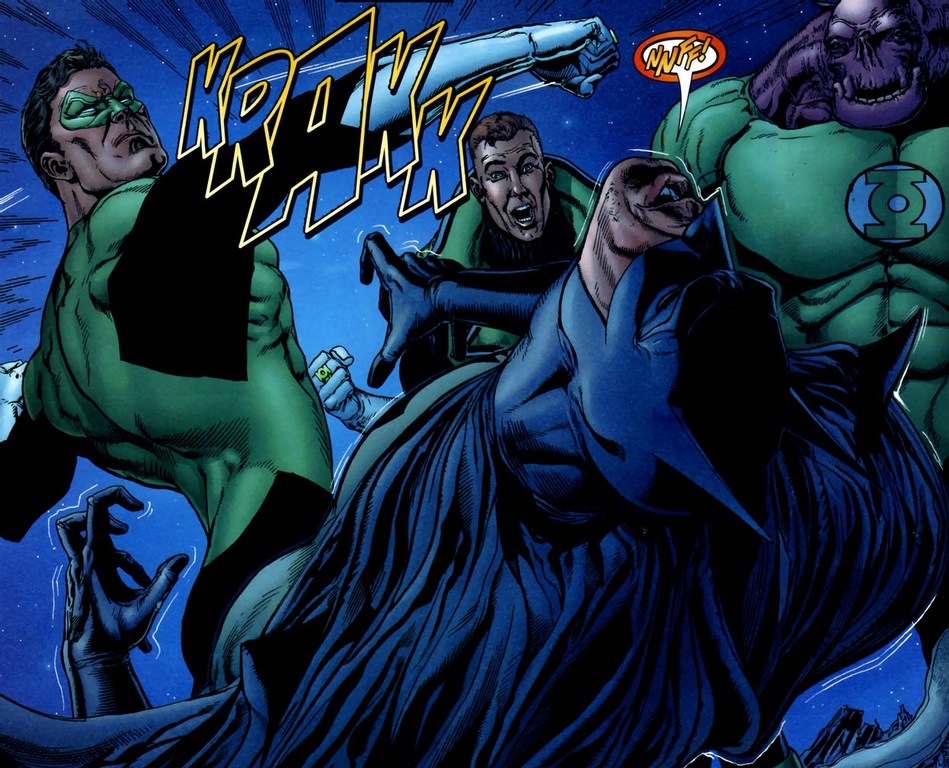
Greg: I’m so glad you included this team, because it gives me a chance to rave about their collaborations. “Rebirth” was my reintroduction to the Green Lantern corner of the DC Universe, and it was Johns and Van Sciver’s brave and ingenious work that breathed life back into the concept and hooked me on comics once again.
While there are other teams that were more prolific, and other artists who enjoyed successful collaborations with Johns, Van Sciver is the one that has arguably added the most creative spark to the books. Whether they worked or not, there’s no denying the sheer imagination that went into both Rebirths: Flash and Green Lantern. From the large-scale redesigns of Sinestro, Wally West and others to little but key additions like Green Lanterns’ badges projecting out from them, Johns and Van Sciver never stopped throwing more embers into the creative fire.
However, as much as I love these two together, there’s one Geoff Johns pairing I like even more.
Greg’s No. 2: Geoff Johns and Ivan Reis
Nick: This was the other pairing I considered for my token GL slot, and I can’t find any real fault with picking this one. After all, Reis did draw Blackest Night, the event Johns had been building to from the start of his GL run.
Greg: While EVS helped Johns relaunch Green Lantern with “Rebirth” and Carlos Pacheco did a fine job penciling Hal Jordan’s initial adventures back on Earth, from before the epic Sinestro Corps War event through the equally epic Blackest Night, Geoff Johns’ Green Lantern belonged to Ivan Reis. That constitutes, in my eyes, the greatest Green Lantern run of them all, and one of the best on any superhero book. The pair consistently produced the most exciting book on the stands, and it was under their watch that Green Lantern — Green Lantern! — became a top-selling title.
The Blackest Night event marked a commercial high point for the modern DC Universe, with more marketing tie-ins than any DC event in recent memory. And it’s one of the most cinematic pieces you’ll ever read, with all the trimmings of a terrific summer blockbuster.
Yet they didn’t stop there. With the launch of the New 52, Johns hand-picked Reis to help him reinvent and rejuvenate one of the most mocked of all the superheroes: Aquaman. And together they succeeded, turning Aquaman — Aquaman! — into a top-selling and critically acclaimed title. Suddenly Arthur Curry is in high demand, earning a previously unthought-of spinoff book and (allegedly) earning a spot among the big-screen Justice League. Reis’ ability to capture both the humanity and the superhumanity of Arthur, coupled with Johns’ unparalleled gift of reinvention, helped define the character for a new era of readers and change the minds of many (including my colleague Nick) who had previously written off the King of the Seas.
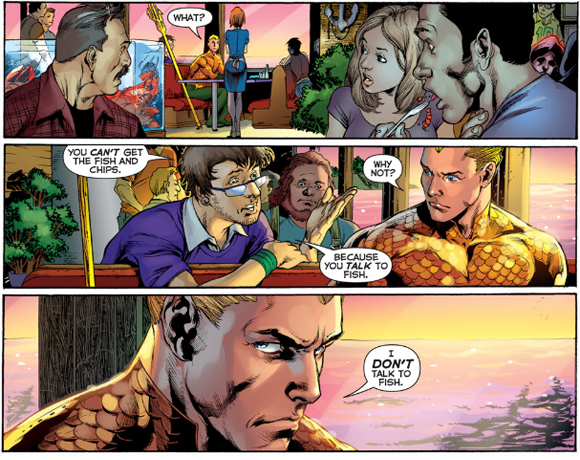
Add to that a terrific (albeit brief) run on Justice League and you’ve got a team that means an instant buy anytime I see it on a cover. Hell, I’m pretty sure they could get me to buy an Archie book.
Reis has the rare ability to meld Jim Lee’s iconic poses and action scenes with the vivid emotions of a Gary Frank. It’s a staggering combination.
Nick: Beautifully stated, sir.
Nick’s No. 2: Jeph Loeb and Tim Sale
Nick: As you mentioned earlier, this duo has worked together to produce unique takes on some of the most iconic characters in comics. But, it’s their work on Batman that I want to highlight.
Greg: As stated above, I adore this team and the vast majority of its work. Their stories have a poignancy and class that separate them from the pack.
Nick: I consider myself to be a massive Batman fan, and I’ve read a lot of Batman stories over the years. Of all those tales, it’s Loeb and Sale who are responsible for what I consider to be the two best. The Long Halloween and Dark Victory are both iconic in their own ways, and both are considered all-time classics.
While most prefer LH and its brilliant serial killer/superhero story, I’ve always maintained that “Dark Victory” is the best Bat-story I’ve ever read. For one thing, it provided a take on young Dick Grayson that was logical. By that, I mean it made sense in a modern context why a man as driven and single-minded as Bruce would risk bringing a young boy into his crusade. Plus, its heavy focus on Two-Face endeared it to me almost instantly, and it still stands as one of the best Harvey Dent stories.
Loeb has proven in the years since his collaborations with Sale that he’s one of those writers who just knows how to write a good Batman story. He can balance between Bruce and Batman, between superheroics and detective work better than most. Yet, it’s Sale who I think most often when I think of the pairing. His art stylings stick in the mind like few others, and his rendition of Joker is one of the most beautiful, yet off-putting I’ve seen. And it doesn’t stop with the Joker. His versions of Two-Face and Calendar Man are the two that I instantly picture when talking about those characters, and his Poison Ivy ain’t half bad either.
I wish we could get one more Loeb/Sale collaboration, but if all they ever gave the world was their Batman work, it’d be hard to call their partnership anything but a rousing success.
Greg: Kudos to both men for making such an impression on us as readers over the years.
Greg’s No. 1: Alan Moore and Dave Gibbons
Nick: Your list has been filled with some of the biggest names in comics history, and it’s hard to get much bigger than these two, the creators of perhaps the greatest comic work of all time — Watchmen.
Greg: They are indeed responsible for the best comic book story I’ve ever read (the aforementioned Watchmen), but they’re also responsible for my favorite Superman story and one of my favorite Green Lantern stories.
The focus of this article is on teams, and there is no pairing in comics that better represents the word “team” to me. So much has been written about Watchmen by people smarter and more qualified than me, but I’ll echo the bulk of it and say that what Moore and GIbbons accomplished with it is nothing short of brilliant. It was a wholly collaborative effort, as all comics should be, with each creator contributing essential things, sometimes even subliminally! Alan Moore is such an out-there personality and visionary that some artists may have buckled under the pressure of all those ideas and directives. On the contrary, Gibbons embraced the ideas and molded them, adding his own and truly crafting a story with Moore that will stand the test of time for all future generations of readers.
But let’s put Watchmen aside for a moment, as blasphemous as that may sound. The two also collaborated for what I consider the best Superman story of them all: “For the Man Who Has Everything” (Superman Annual #11). Faithfully reproduced in an episode of “Justice League Unlimited,” this story is as astonishing and powerful on its 20th read-through as in its first. The sheer emotion dripping off each panel is a testament to both creators, who crafted a standalone story as rich as most other creators’ multi-year epics.
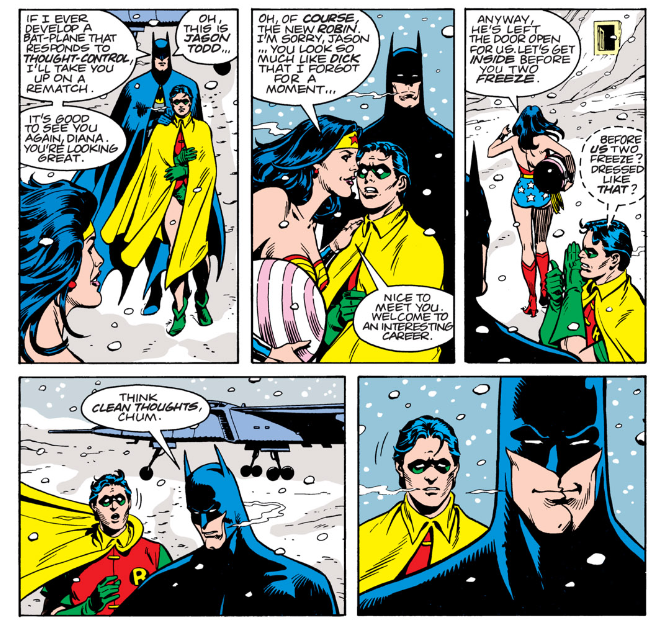
And, of course, they’re responsible for one of our favorite Green Lanterns of all. They introduced the world to the sentient planet Mogo in the aptly titled “Mogo Doesn’t Socialize,” a hilarious example of just how malleable the mythos can be.
Though they didn’t work together as long or as often as most of the great teams, there is no other pairing with a batting average in the same ballpark as these two.
Nick: As you said, Watchmen is the 8,000-pound gorilla in the room when it comes to Moore and Gibbons, but the pair had quite a slew of other notable accomplishments. The guys gave us Mogo, for God’s sake. What more need be said?
Greg: And do not dare leave out the name of BOLPHUNGA THE UNRELENTING!
Nick’s No. 1: Brian Michael Bendis and Mark Bagley
Nick: In comics, longevity doesn’t always equal greatness. Just because something is long running doesn’t mean it’s good. However, in the case of Bendis and Bagley, greatness and longevity went hand in hand.
The pair launched Marvel’s Ultimate universe in 2000 with Ultimate Spider-Man, and the book was a pretty massive success from the getgo. However, I don’t think anyone would have predicted that the pair would combine to write 110 issues, the longest consecutive run by any creative team.
And there was good reason for their long pairing. The pair redefined Spider-Man and his mythos for a new generation. Bendis brought a youthful sensibility to the book, allowing it to have dialogue between teenagers that felt authentic, while Bagley’s pencils did a fantastic job of capturing emotion when it was time to get emotional and conveying movement and force during the most intense action scenes.
It could have gone on forever. Yet, that was not meant to be. Bagley left with issue 111, an issue that he co-drew with incoming artist Stuart Immonen in order to pass the torch. Bendis has remained on the book, since creating a new Spider-Man in Miles Morales. Bagley has popped in from time to time, most recently for Cataclysm and Ultimate Spider-Man 200, an anniversary issue that gave us one more glimpse of Bagley and Bendis’ Ultimate Peter Parker.
I could go on and on about their accomplishments, but really they rank at the top of my list because of all they’ve meant to me. Their USM work was responsible for getting me into comics, and through the ups and downs of my comic readership, I’ve always had those trades to lean on when monthly quality was lean. You never forget your first, they say, and I couldn’t have asked for better tour guides on my initial trip into monthly comics than Bendis and Bagley.
Greg: One can’t argue with such a personal tale. It’s fair to say that without Bendis and Bagley, you never would have gotten wrapped up in the world of comics. And if that hadn’t happened, not only would there be no Hard-Traveling Fanboys column, but our own friendship may not have grown as much as it has over the years.
Nick: To that I can only say, maaw.

Greg: And with that inside joke none of you will get, loyal readers, we bring an end to this edition of Countdown. We hope you join us next week for another edition of The Longbook Hunters. This time out, we’re delving into our first Western book: All-Star Western, to be precise, by Jimmy Palmiotti, Justin Gray and Moritat.
Nick: As always, we welcome your feedback on Facebook, Twitter (@gphillips8652 and @nickduke87) or through email (GregP@placetobenation.com and NickD@placetobenation.com).
